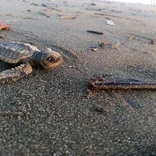- Costa Rica
About Program
Become a volunteer with Rainbow Garden Village and help in one of our programs in Costa Rica. Whether you prefer to work with children or animals, in Costa Rica we offer projects in both areas, social and wildlife conservation.
Volunteering with RGV not only gives you the opportunity to get involved in a meaningful project, but also allows you to experience the beautiful landscapes, happy people, amazing beaches and the interesting historical background of the country.
Take the chance to explore a different country in your free time and make a little big change!
Video and Photos
Program Highlights
- Orientation Program before the start of the project
- Spanish language course can be added (additional costs)
- Accommodation included
- Small Groups with up to 12 Volunteers
Popular Programs

In the Daycare center in Costa Ricas capital San José, children are offered everything they need to live, as well as the opportunity to learn and play. As a volunteer you can teach children between 3 Months and 12 years or help childcare. You will work in a fixed age group.

Support the local team in this project by taking care of children aged 3 to 15, helping them with their homework and working to improve their school performance. The organization lacks trained staff, which is why they are urgently looking for volunteers!

The southern Pacific coast of Costa Rica is a largely untouched treasure. Wetlands that stretch deep into the land alternate with miles of palm-fringed beaches. A research and observation station takes care of the wildlife there, which includes turtles, crocodiles, birds, mammals and butterflies.

Work in a sanctuary on Costa Rica's Caribbean coast, which cares for sick, injured and orphaned wildlife, such as sloths, turtles, monkeys and other animals. The sanctuary takes care of them and eventually releases them back into the wild. Assist the facility with feedings, enclosure maintenance and reintroductions and learn about Costa Rica's magnificent wildlife!













